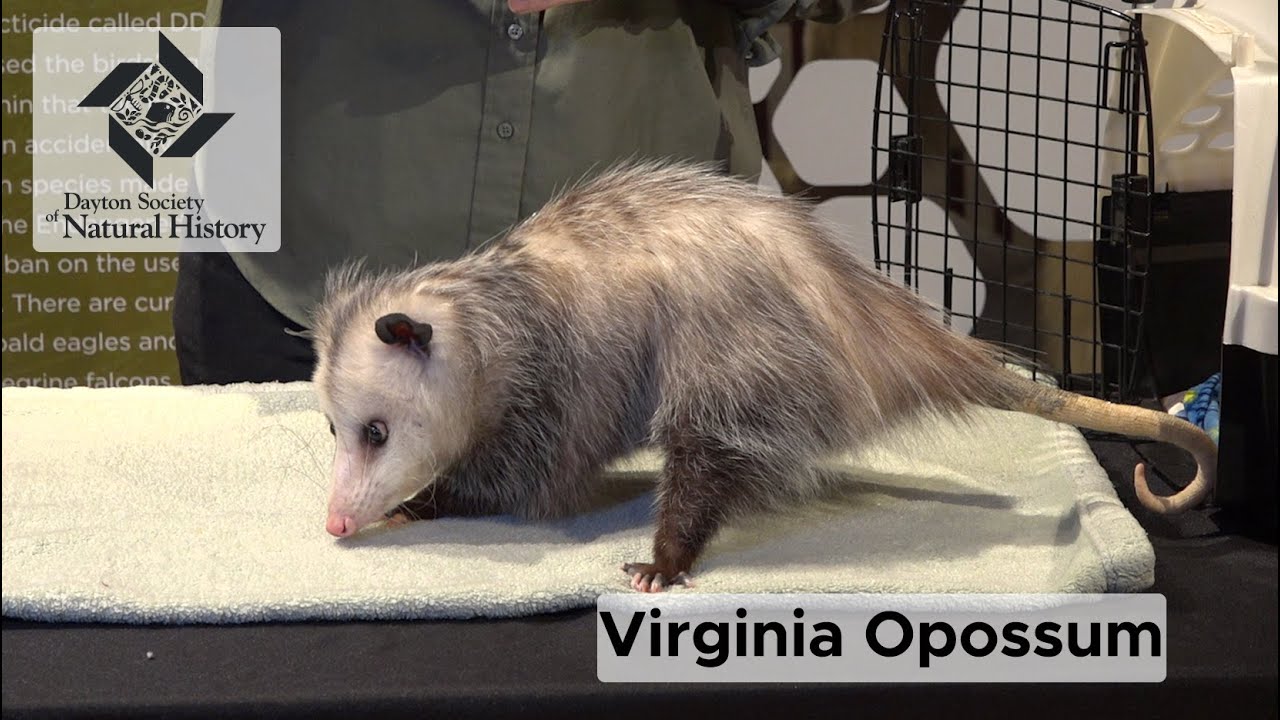Summary:
1. Meet Paisley, a Virginia Opossum – one of the animal ambassadors at the Boonshoft Museum.
2. Discover the unique features and adaptations of the Virginia Opossum.
3. Learn about Paisley’s animal ambassador role and important educational work4. Explore the fascinating aspects of opossum behavior, diet, and reproduction.
5. Gain a deeper appreciation for the conservation efforts and challenges facing these intriguing marsupials.
Welcome to the Boonshoft Museum, where we strive to connect visitors with the wonders of the natural world. Today, our curator of live animals, Donna, is excited to introduce you to one of our beloved animal ambassadors, Paisley – a remarkable Virginia Opossum. Get ready to embark on a fascinating journey into these incredible creatures’ unique and captivating world.
The Virginia Opossum, scientifically known as Didelphis virginiana, is a marsupial native to North America. While often misunderstood and misjudged, these opossums possess various features and adaptations that make them remarkable. Let’s dive into some of the standout qualities of the Virginia Opossum.
First up, let’s talk about their appearance. With their white face and long, hairless tail, Virginia Opossums have a distinct appearance that quickly separates them. They also possess a prehensile tail, meaning they can use it like a fifth limb, aiding in climbing trees and gripping onto branches. Their fur, ranging from gray to black, is incredibly soft and helps keep them warm during colder weather.
One of the most fascinating aspects of the Virginia Opossum is their adaptation of playing dead when threatened. When faced with danger, they will display a behavior known as “playing possum,” where they roll onto their side, go limp, and even emit a foul odor to mimic the scent of a decaying animal. This survival tactic is an excellent example of their ability to adapt and thrive in various environments.
But what role does Paisley play as an animal ambassador? As an ambassador, Paisley plays a vital role in educating and inspiring visitors about the wonders of nature. She helps break down barriers and misconceptions surrounding the Virginia Opossum, fostering a deeper appreciation and understanding of this unique species.
Visitors can meet Paisley up close and personal during interactive sessions, where they can observe her behavior, learn about her diet, and discover fascinating facts about opossums. This hands-on experience allows guests to develop a connection with these animals and their role in our ecosystem.
Let’s delve into the behavior and dietary habits of Virginia Opossums. Unlike their distant kangaroo relatives, they are not herbivores. They are opportunistic omnivores, meaning they will eat just about anything they come across. Their diet is incredibly diverse and adaptable from fruits, insects, small vertebrates, and carrion. This flexibility in their food choices ensures their survival even in changing environments.
Reproduction is another intriguing aspect of the Virginia Opossum’s life. They have a unique reproductive system, as they are marsupials. Females have a bifurcated reproductive tract, meaning they have two uteri and separate birth canals. After a gestation period of only 12-14 days, the tiny, less than 1-inch-long babies, called joeys, are born and immediately crawl into the mother’s pouch. They remain nursing and growing there for approximately two to three months before venturing into the world.
While Virginia Opossums may face misconceptions and challenges in our human-dominated world, they play an essential role in maintaining the balance of our environment. Their diet includes pests such as ticks, which they avidly consume, reducing the risk of tick-borne diseases. By learning more about these incredible animals and sharing our knowledge, we can contribute to their conservation and protection.
Conservation efforts are crucial for the survival of Virginia Opossums. Habitat destruction, road accidents, and human-wildlife conflicts pose significant threats to their population. By supporting organizations working towards habitat preservation and promoting responsible interaction with wildlife, we can ensure a brighter future for these marsupials and other species they share their ecosystem with.
As we conclude our journey into the fascinating world of the Virginia Opossum and Paisley’s role as an animal ambassador, we hope you have gained a newfound appreciation for these unique creatures. By spreading awareness and understanding, we can help conserve and protect the rich diversity of wildlife surrounding us.
Don’t miss the chance to meet Paisley and other animal ambassadors at the Boonshoft Museum. Come and discover the wonders of nature up close, experience the joy of learning, and leave with a renewed sense of awe for the natural world. Join us in our mission to connect people with nature and make a positive difference in the lives of these remarkable animals.
*****
Source Description
Our curator of live animals, Donna, introduces you to one of our animal ambassadors, Paisley, a Virginia Opossum!
http://www.boonshoftmuseum.org/experience-more/digital-programming/


